Communism in Europe?
So last century.
Actually, no.
Welcome to Transnistria.
This sliver of land tucked between Moldova and Ukraine is internationally recognized as Moldovan territory—though the Transnistrians would disagree. To them, their land is a sovereign nation complete with its own governance, border control, currency, military, and culture.
Prepare to be transported back in time. In Transnistria, the Soviet Union is alive and well. Little snippets of Transnistrian life such as statues of Lenin, the hammer and sickle, and Soviet-styled bureaucratic buildings, will throw you back into pre-1990 Eastern Europe.
It’s a fascinating region any traveller should check out.
Here’s some information to get you started.
The History of Transnistria
The breakaway state’s history began in 1924. Transnistria was part of the Moldavian Autonomous Soviet Socialist Republic.
During World War II, the Soviet Union swooped in, taking parts of the Moldavian ASSR and a chunk of the Kingdom of Romania’s Bessarabia region, melding them together to form the Moldavian SSR (removing the ‘autonomous’ aspect, thus putting it under the control of the Soviet Union).
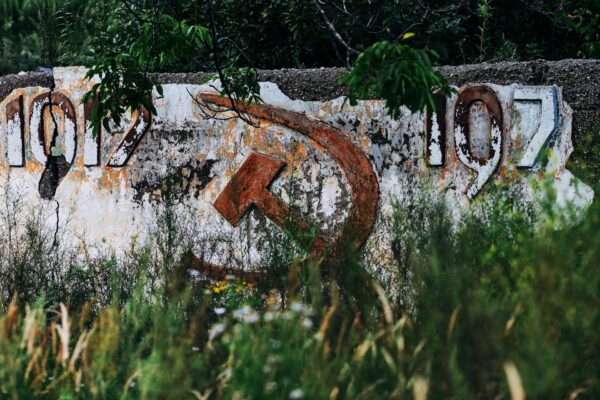
In 1990 the beginning of the end for the Soviet Union started. Like a cascade of falling dominoes, communist states in Eastern Europe fell alongside it. Pro-Soviet separatists in the north of Moldova clung to the hope of a communist future, fearing that the rest of Moldova would reunify with Romania or declare independence. They formed the Pridnestrovian Moldavian Soviet Socialist Republic, or simply Transnistria.
Later that year, a war broke out between the republic and the newly formed Republic of Moldova, which didn’t want Transnistria to be independent.
In 1992 the war ended. Aided by Russia, Transnistria won. It became a de facto independent state in the ceasefire agreement but remains unrecognized as a sovereign nation.
The region’s status remains unresolved, and the issue is considered a “frozen conflict.”
People of Transnistria
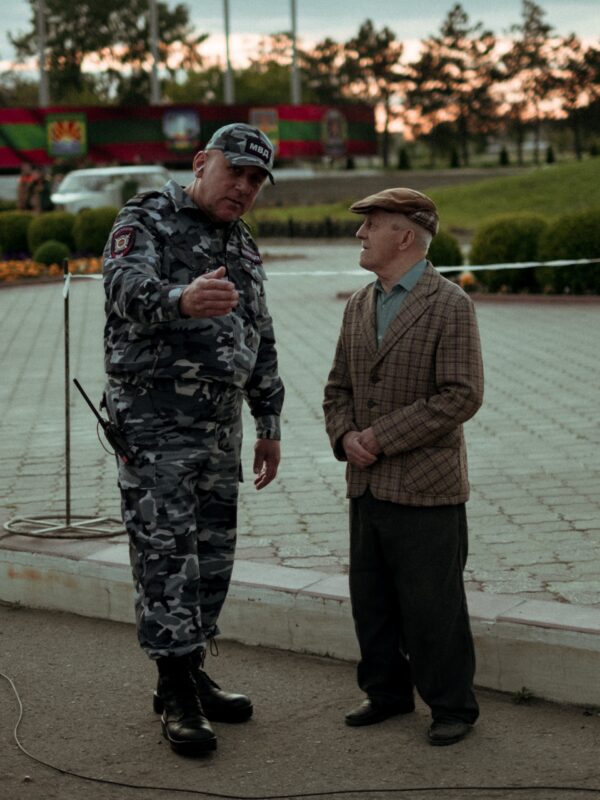
Of the estimated 347,251 people in Transnistria, the majority are ethnically Russian, Moldovan, or Ukrainian.
The primary languages are Russian, Ukrainian, and Romanian.
91% of the population practices Eastern Orthodox Christianity, while 4% adheres to Roman Catholicism.
The capital is Tiraspol. This small city, frozen in time, still boasts loads of Soviet influences. From its statue of Lenin in the main square to a monument of a T-34 tank commemorating Soviet victory in World War II, no shortage of sites will remind you of this region’s communist past.
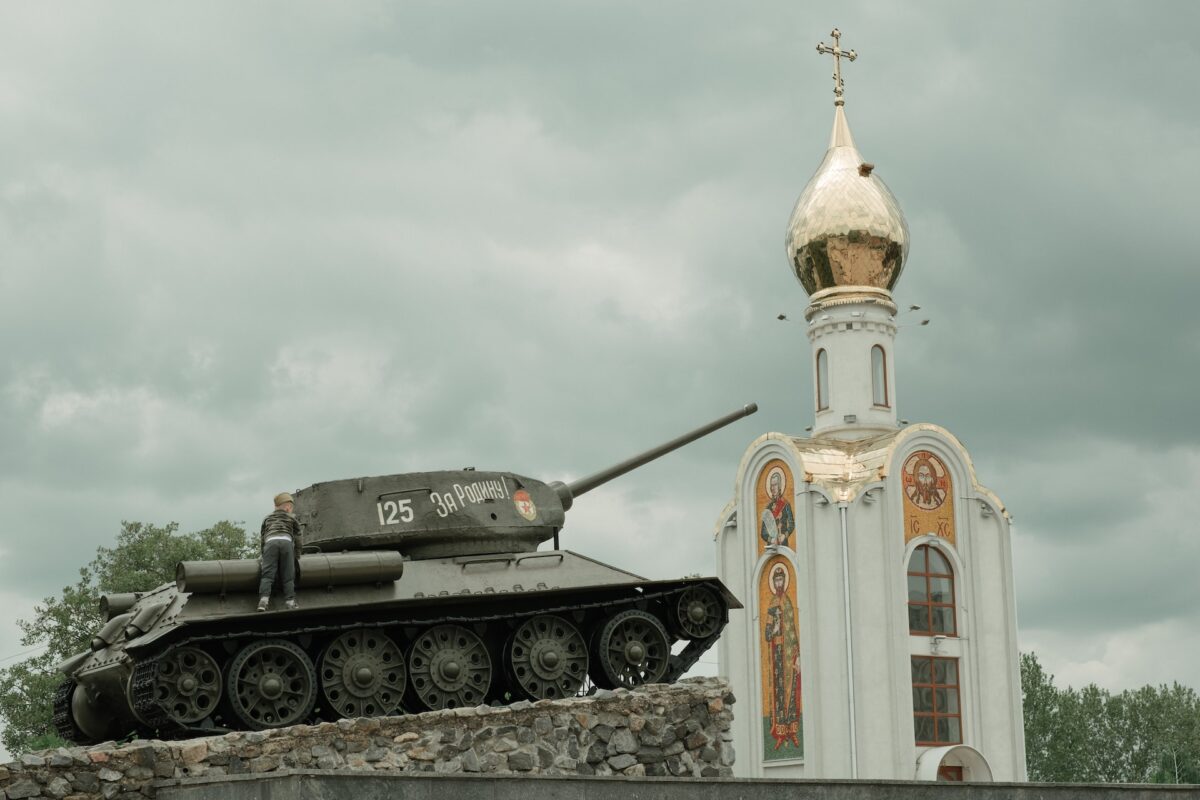
The Flag of Transnistria
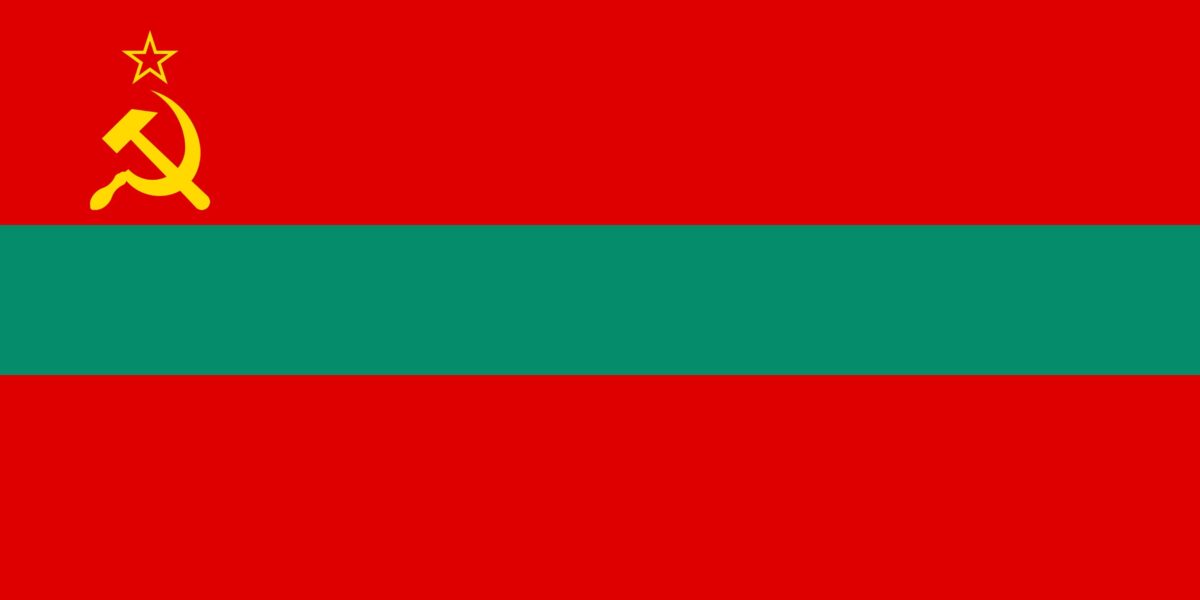
Despite the unabashed hammer and sickle, Transnistria is not a communist state.
They have a mixed economy, and its President and Legislature are elected by the people.
The flag was the former flag of the Moldavian SSR and can be seen as a symbol of Transnistria’s desire to stay allied with the main power in the region, Russia.
Transnistria and Russia
Since the end of the Transnistrian War in 1992, Russia has had a military presence in the region, claiming its soldiers are acting as peacekeepers. Relations between Russia and the de facto state have been close since Transnistria first declared independence, with Transnistria even proclaiming the Russian flag as a co-flag of its own.
There is concern that Russia may stage an attack on Ukraine from Transnistrian territory, but Transnistria insists it will remain neutral.
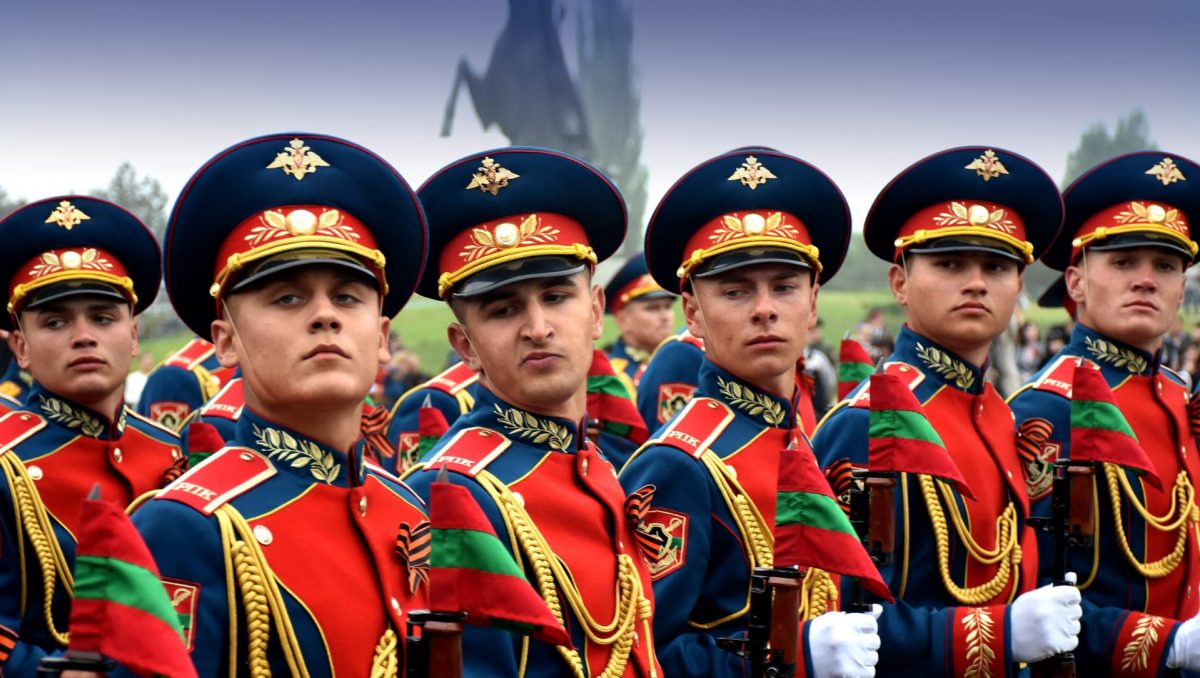
Why Should You Travel There?
There is no place like it in the world.
If you have a deep fascination with all things communist, Transnistria is the place to go.
Soviet trolleybuses will move you to the various markets in Tiraspol. During the Victory Day celebrations, you can catch the national pride of the region during its military parade. Monuments to communist leaders remain standing in every part of the country.
Transnistria packs a lot of sights, experiences, and spectacles for such a tiny piece of land. If you’re looking to escape the typical European destinations, Transnistria is a must.
Is Transnistria Safe?
Yes.
Stories of police shakedowns are things of the past. The region is welcoming to tourists.
If you book a tour with us, a local Transnistrian guide will be with you every step of the way.
Do You Need a Visa?
For most nationalalities, no.
EU, US, UK, and Australian citizens can get a visa in Moldova on arrival and another visa for Transnistria at the border.
You should ensure your passport has two empty pages and is valid for at least six months after the end of your trip.
To this day, Transnistria is a hot spot for geopolitical tensions, as well as a time capsule for the former Soviet Union. With such profound importance in the region, especially following Russia’s invasion of Ukraine, this strip of land is a dream for any traveller seeking a side of Europe where historical conflicts meet present-day ones.
If you visit Transnistria, prepare to enter a country that doesn’t actually exist, but the people, sights, sounds, and experiences of the Soviet Union still do.
Interested in travelling to Transnistria?
Questions? Comments? Concerns?
Keep In touch
Make sure you never miss an adventure by signing up to our mailing list. Be the first to know about new tours and travel tips.
